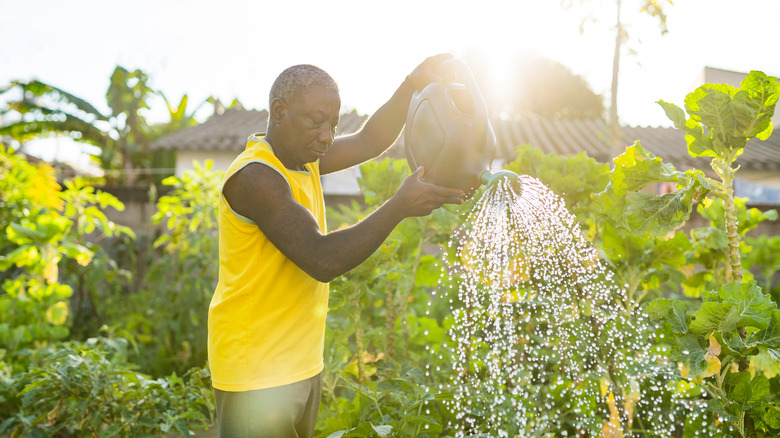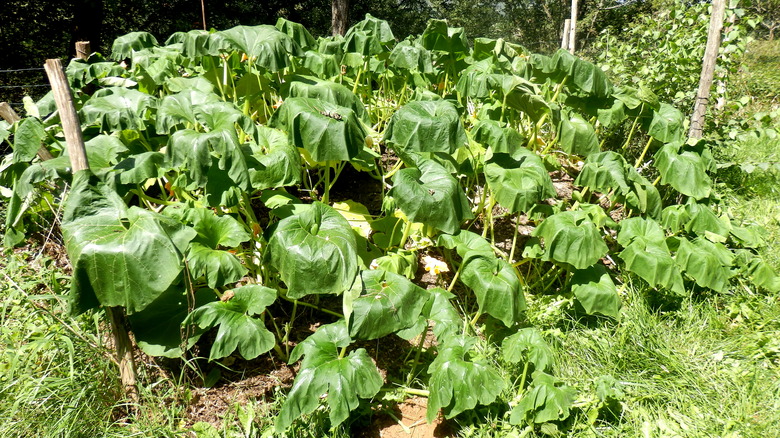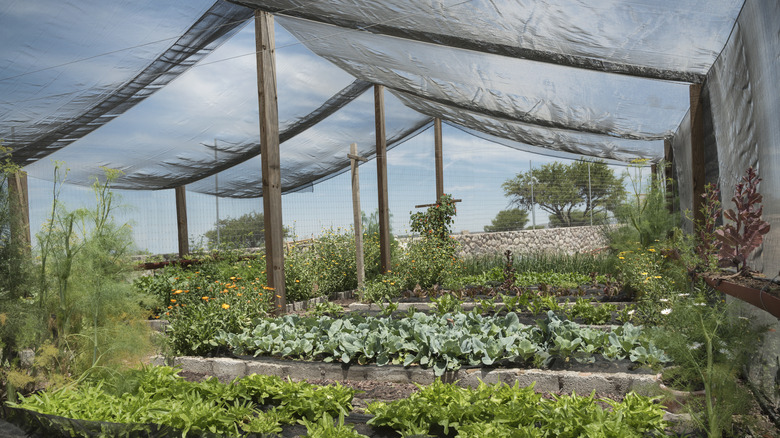Why Are My Garden Plants Wilting In The Summer Heat?
As the temperatures rise, summer plants may start showing signs of stress. Just like human bodies make adjustments in the heat by sweating to cool down, plants also take protective measures. When you are working hard to keep your garden healthy, it can be discouraging to check on your plants and see wilted leaves. Thankfully, that's not always a bad sign — they may simply be trying to stay alive until the extreme heat passes.
There are a lot of reasons whey garden plants wilt. Severe pest damage can decimate some plants very quickly. For example, if you have squash vine borers, your plants may look healthy one day and completely wilted the next. Bacterial and fungal issues also cause wilting, but that damage happens over a period of weeks. It is easy to tell the difference between plants wilting due to summer heat and damage caused by more serious issues. If they only wilt in the daytime and perk up again at night, it's most likely due to hot weather. If they wilt and do not recover, or become increasingly sickly, you have a bigger problem.
Why do plants wilt when it's hot?
Almost any kind of plant can wilt due to summer heat, but it is most noticeable in large-leaf plants like squash and hydrangeas. Those big leaves contain a lot of water, and the strong summer sun causes some of that moisture to evaporate. Without delving too far into the biology of plants, it's like the leaves have pores. These small openings allow the water in those leaves to evaporate more quickly than the plant can take up water from the roots. Without the right amount of water, the leaves essentially deflate until they can fill up again.
When the sun goes down and the daily temperature falls, plants can regain the right balance of moisture in their leaves. As the speed of evaporation decreases, it again matches the rate at which water moves through the plant, and the plant recovers. If this only happens for a few days during a heat wave, there is no need to worry about long-term damage. If it looks like that heat wave is turning into a heat hurricane, you may need to take additional steps to support your plants during this time.
How can you help?
To ensure your plants have access to enough water to recover from wilting, keep the soil consistently moist. In a heatwave, it may mean watering every day. Without a sufficient amount of water in the soil, plants will not be able to recover, causing stress and eventually death. If you notice your leaves wilting and there is no evidence of disease, pests, or fungal issues, it may be due to hot winds whisking away the moisture from leaves. Installing a temporary barrier protecting plants from severe winds may resolve that issue.
Shade cloth is very helpful in protecting plants from the worst of the summer sun. Available at garden centers or online, this transparent, heavy-duty fabric can block from 30 to 90% of the sun from your plants, depending on the kind you purchase. In most regions in the US, 40% sun-blocking material is ideal. By hanging shade cloth over your plants, they will experience less heat stress and may just make it through the entire summer season unscathed.


